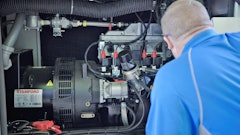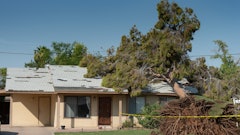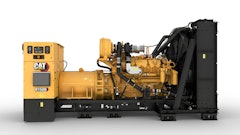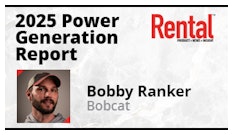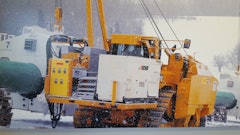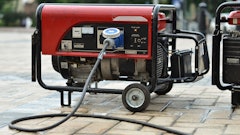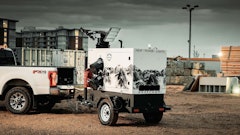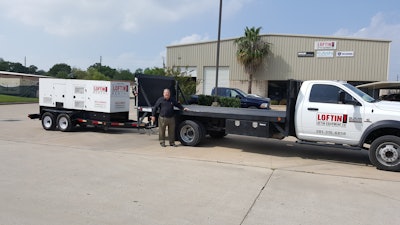
Blizzards, tornadoes, and hurricanes all spell disaster as do myriad other events. Try as you might, dealing with them can be overwhelming. Communication and travel are likely interrupted and when customers finally contact you, there’s only one thing on their mind, “can you help me get up and running.”
This help usually comes in the form of generators, small ones for homeowners who need to keep their lights on and freezers operating and larger ones for offices and retail operations where power demands are much greater. It’s the old saying, you don’t know how much you miss something until you don’t have it, and electricity has to be at the top of most missed and most wanted list.
There’s another old saying, equally axiomatic: “In an emergency, there’s never enough of everything to go around.” The immediate challenge then is how to meet demand for product and services.
Depending on the scope of the disaster, having multiple locations allows stores to shift supply to meet demand. Colorado-based Arapahoe Rental has four locations in the state in Loveland, Windsor, Johnstown and Littleton. An early spring blizzard this year didn’t tax the company generator supply but it put some pressure on its snow removal fleet.
“We’re fairly spread out so we can meet a spike at one location by moving equipment from another store or two,” relates Operations Manager Jed Jaster. “In high-demand situations, scheduling becomes extremely important,” as well. "We try to find out how long a customer will need a piece of equipment, may it be a generator or something else so we can schedule with other customers. Then it’s a matter of having an accurate call back list that allows us to get that equipment back out in quick order.”
Spheres of influence
“I have a mantra, one that applies both to our company and to disaster planning,” relates Joe Atchison, rental manager for Loftin Equipment Company in Houston, TX. “Don’t try to be everything to everybody. Our company focuses on generators and connectors, including everything from cabling and switch gears to transformers.”
Loftin Equipment Company’s generator fleet includes 43 units that range in size from 20kw to 1 meg. Its most popular is the 200kw generator that has a 60- to 70-percent utilization rate. Next are the 350 to 400kw units at 60-percent utilization rate, followed by our 100kw generators that come in at 30 percent.
During a disaster not all of these units will be in-house nor will the company likely have the precise size that a customer would need. Again, Atchison emphasizes that you can’t be everything to everybody.
“Companies need to develop what I call spheres of influence, to be able to reach out even to competitors if necessary to meet demand. The key is for everyone to work together to solve problems.
“Develop relationships ahead of time, to be able to not only supply units, but to service ones already in place, as well. Some of our customers, including major retail chains and manufacturers, need to get up and running in a hurry after a power outage. So, too, do grocery stores that are in a position to lose hundreds of thousands of dollars of food if power isn’t restored quickly. If another company in the area can help us and our customers out, that’s great, and they will return the favor if and when the time comes.”
Steve Ferlita, vice president of Ring Power Corp. headquartered in St. Augustine, FL, adds, “We ensure our customers have the correct number of generators by understanding their graphical territory within the path of the storm and who might need our services. We also leverage CAT’s dealer network of inventories from areas not directly impacted.”
Beyond supplying generators, he agrees with Atchison that service is a key component to taking care of customers during a disaster. “Oftentimes, customer power applications are neither the same nor are they simple. For example, utility needs to be isolated before bringing the load on line to ensure the safety to everyone. During the operation of the rental generator, monitoring, fueling and servicing the engine are considerations.”
He continues, “Once the utility power is restored, reversing your actions safely for all involved is an underestimated requirement. There are a myriad of other logistical challenges such as but not limited to coordinating labor, transportation, fuel, permits and supplies simultaneously, at a time when all resources are at peak demand.”
Diversity and training
Tony Crandall, rental sales manager for Columbus, OH-based Buckeye Power Sales Company, points to two other areas where having efficient systems in place can show their worth in difficult situations.
“For our generator division, having a diverse fleet of units that range anywhere from 20kw to 1500kw is the first step toward preparedness. Then whenever units are returned, they’re immediately serviced and placed on the ready-to-rent line. In other words, they’re serviced, stationed and ready to go prior to needing them in an emergency. The same holds true for our cable, switch gear and other power-related equipment.”
He emphasizes that the last thing one wants to be doing in a crisis situation is servicing equipment at the last moment or trying to determine if something is even available to rent.
“Being trained on what to do during a disaster is especially important,” says Crandall. “We have four branch locations and coordination among them is critical. For larger events such as Hurricane Sandy in 2012, someone was in charge of knowing not only how many generators in total were available but how to deploy them. At one time, we had three flat-bed trailers at each location loaded with 60kw to 200kw generators heading to the East Coast. It also helped to have close friends at other Kohler rental dealers from around the country to assist with both resources and logistics.”
For larger equipment, his store has contingencies in place with freight haulers. “Really big stuff,” he notes, “creates other hurdles, not the least of which is getting heavy trailer permitting. All this should be worked out prior to a disaster.”
Ferlita adds, “Have a plan to make sure everyone within your company clearly understands their responsibility and cascades the plan throughout your company. Complacency is the worst approach to any disaster situation.”
Two-way street
Disaster planning is a two-way street. Customers, as well as their suppliers, have an obligation to have a disaster plan in place. “Ring Power offers a free service where our rental professionals will conduct a site survey, which provides the customer with a plethora of information, including a customized planned approach to protect themselves against a power loss,” notes Ferlita.
“They should also have updated contact information for their suppliers, and even run mock drills to vet out any unforeseen shortcomings within their control. At a minimum, they need to have a contingency plan in place with a local provider they can rely on to get their company back on line safely to restore operations.”
Experience counts, too, says Atchison. “Although Loftin Equipment Company has been through many hurricanes, I’ve never been through one myself. I know from talking with those who have that you have to learn from past events. I’ve been told that when Hurricane Ike went through here, the storm not only blew away buildings but also essentially blew away generator fleets. Stores rushed to help customers, sometimes at the expense of knowing precisely where the equipment was going. Remember, during a crisis situation employees have to be even more vigilant about tracking equipment.”
Disaster preparation involves several moving parts complicated by a potential communication breakdown during the event, a sense of urgency, and the absolute need to move ahead as safely and efficiently as possible to restore power. Remember, not only do you want your store to be well-postured to help customers survive, it needs to” live” to rent another day and be able to help customers in a time of need.

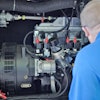


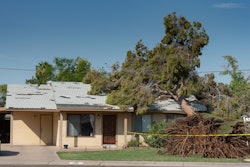
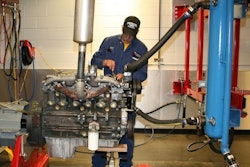
![[VIDEO] Kohler Offers Innovative Way to Parallel Generators](https://img.forconstructionpros.com/files/base/acbm/fcp/image/2016/03/default.56d6fde84ff40.png?auto=format%2Ccompress&fit=crop&h=167&q=70&w=250)



